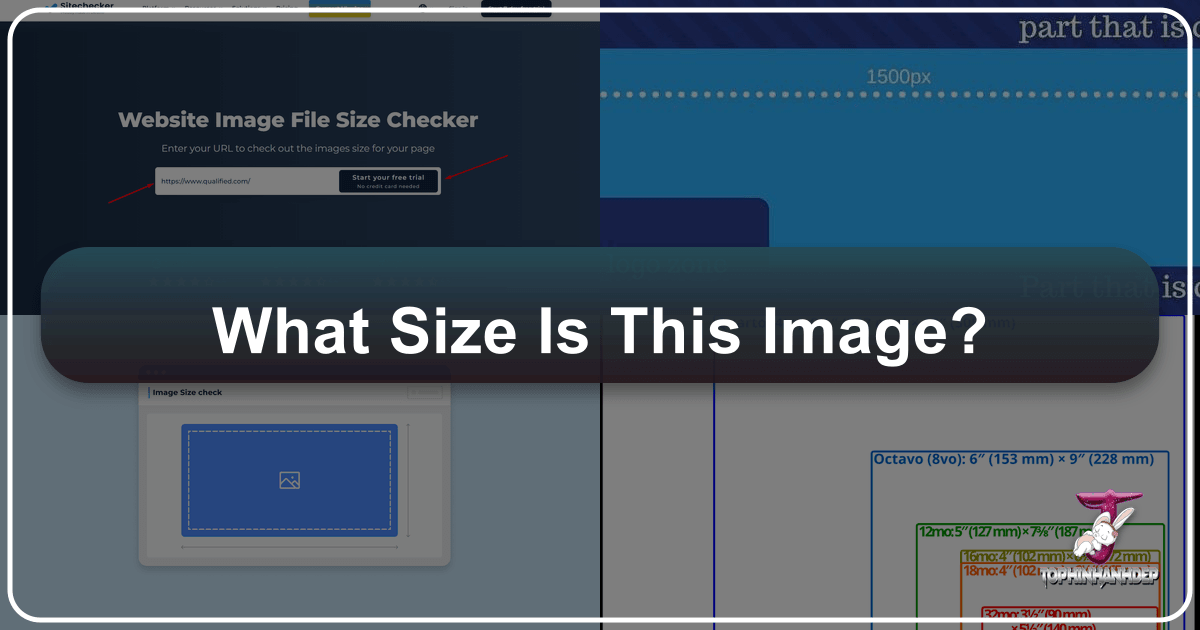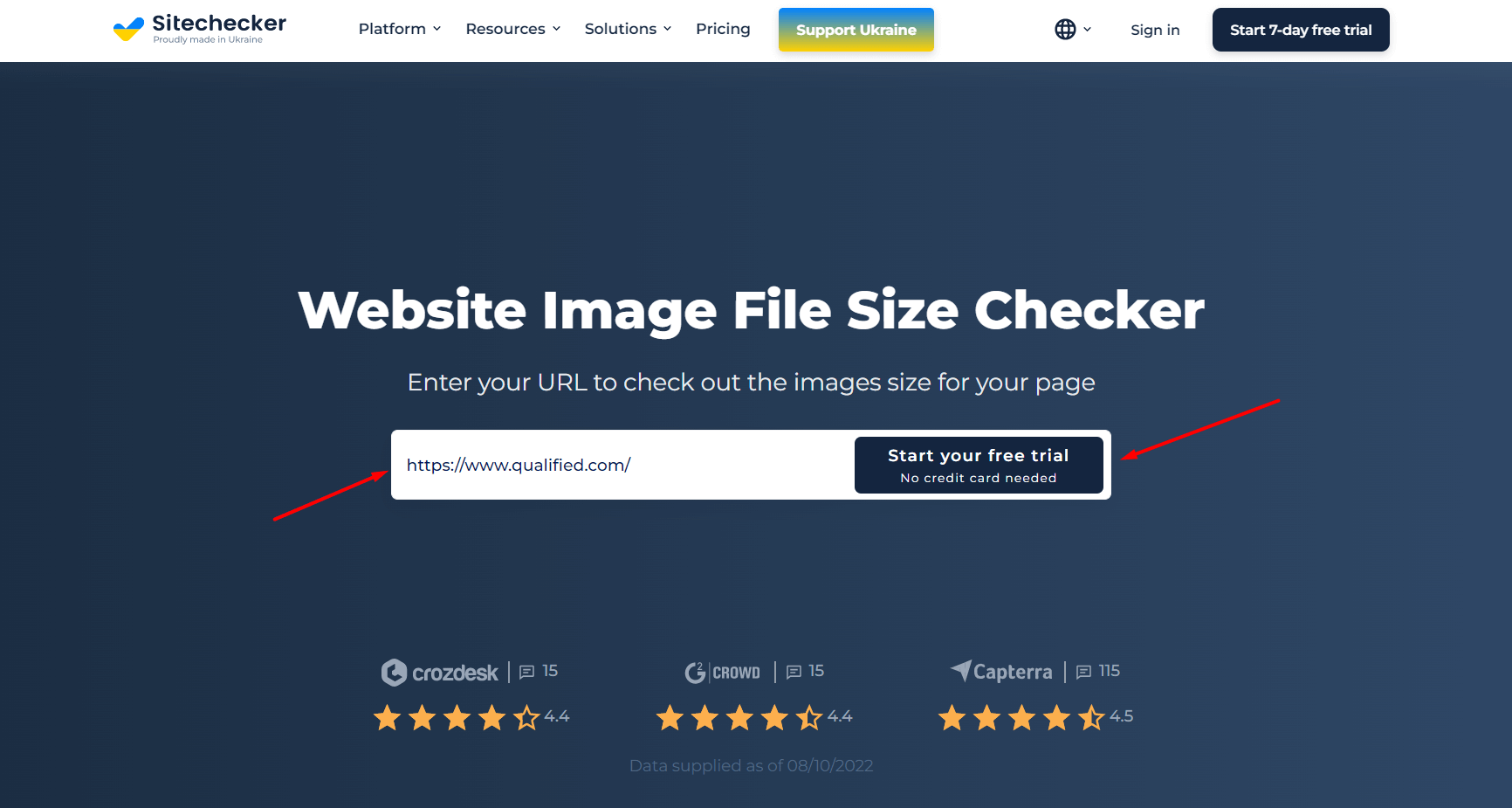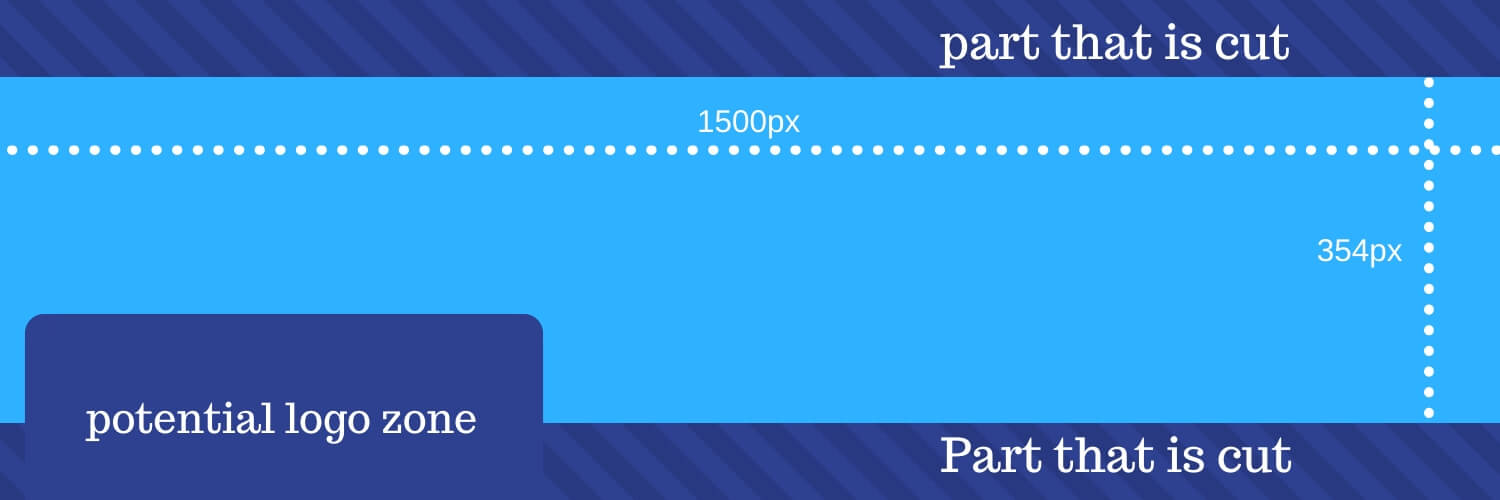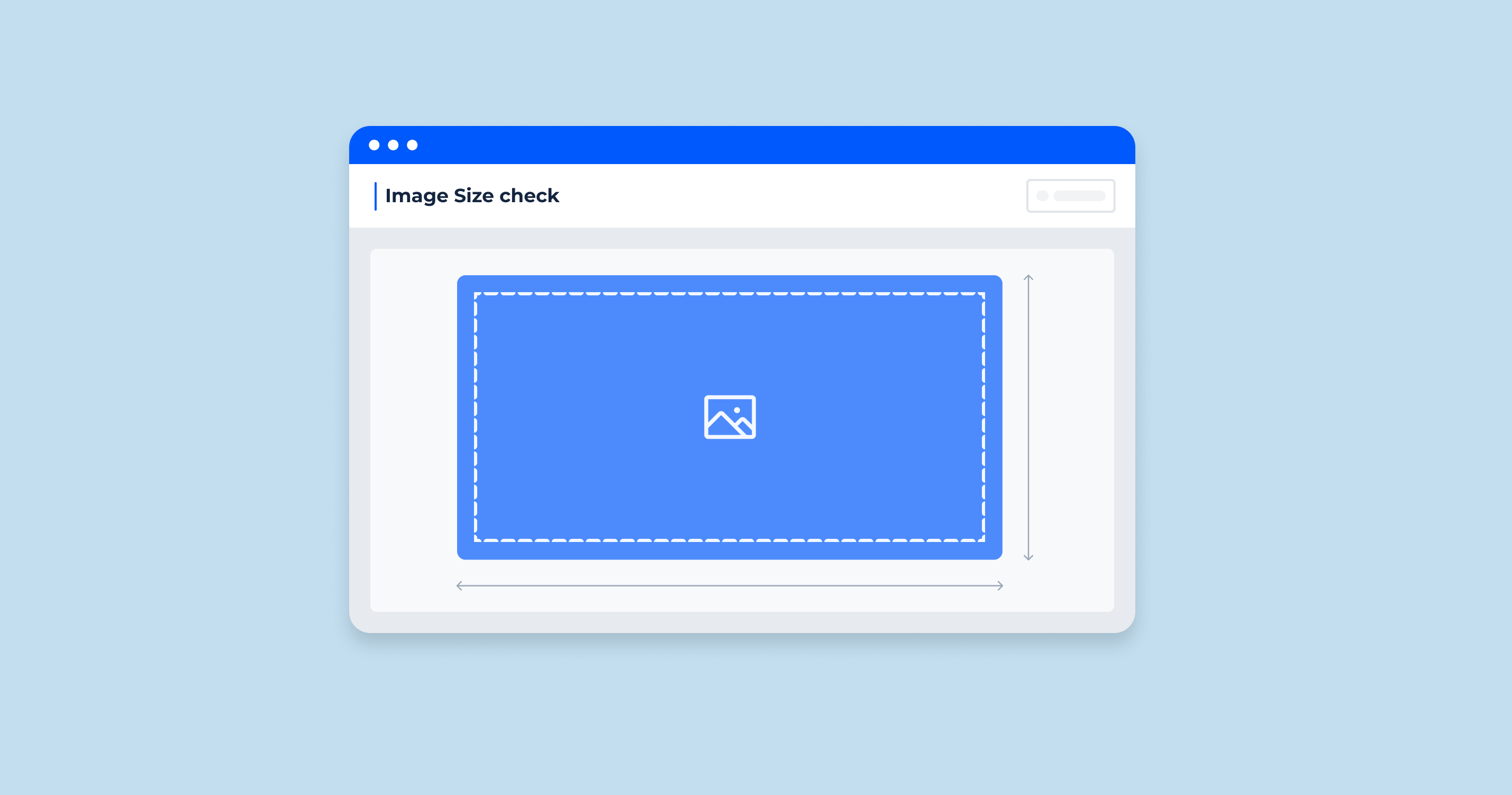What Size is This Image? Your Ultimate Guide to Digital Photo Dimensions

In the vibrant world of digital imagery, understanding image size is not just a technicality; it’s the cornerstone of effective visual communication. From crafting breathtaking wallpapers and backgrounds to ensuring your high-resolution photography shines on social media, the dimensions and aspect ratio of your images dictate their impact, quality, and versatility. At Tophinhanhdep.com, where we celebrate everything from aesthetic nature shots to abstract digital art, and provide essential image tools for conversion and optimization, we know that mastering image dimensions is crucial for both amateur enthusiasts and seasoned professionals.
This comprehensive guide will demystify the intricacies of image sizing, providing you with the knowledge to select, prepare, and optimize your images for any purpose. Whether you’re looking to print a cherished photograph, upload stunning visuals to your website, or perfect your social media presence, knowing “what size is this image” and “what size should this image be” is your first step towards visual mastery.

The Fundamental Building Blocks: Aspect Ratios and Measurement Units
Before diving into specific dimensions, it’s essential to grasp the core concepts that define an image’s shape and scale: aspect ratio and measurement units. These elements are critical for anyone working with digital photography, visual design, or preparing images for display, printing, or sharing on platforms like Tophinhanhdep.com.
Demystifying Aspect Ratios: Defining Image Shape

An aspect ratio describes the proportional relationship between an image’s width and its height. It’s expressed as a ratio, such as 1:1 or 16:9, and fundamentally determines the shape of your photograph or design, regardless of its actual pixel count or physical size. Understanding aspect ratios is paramount because changing it typically involves cropping, which can alter the composition of your image. This makes it a crucial consideration even before you capture or begin designing your visual content.
Let’s explore the most common aspect ratios:
- 1:1 Ratio (Square): This iconic square format is widely recognized and frequently used for social media profile pictures and certain print photographs. An image with a 1:1 aspect ratio means its width and height are equal (e.g., 1080 x 1080 pixels or 8 x 8 inches). It offers a balanced, classic look, perfect for close-ups or graphic designs featured on platforms like Tophinhanhdep.com.
- 3:2 Ratio: This ratio is deeply rooted in traditional photography, being the native aspect ratio of 35mm film cameras. It’s a versatile choice for many print sizes, like 4x6 inches, and provides a slightly wider frame than a square. Many digital cameras capture images in this ratio, making it a common choice for our high-resolution stock photos.
- 4:3 Ratio: Once the standard for older television screens, computer monitors, and digital cameras, the 4:3 aspect ratio is taller than 3:2. It’s still prevalent for general digital photography and ensures images fit correctly on screens that adhere to this traditional display format.
- 5:4 Ratio: Primarily used in art prints and larger photographic prints (such as 8x10 or 16x20 inches), the 5:4 aspect ratio offers a squarer appearance than 4:3 but is still rectangular. It provides a classic, framed look often seen in beautiful photography collections.
- 16:9 Ratio (Widescreen): The dominant aspect ratio for modern widescreen TVs, computer monitors, and digital video content. Its elongated rectangular shape is ideal for showcasing vast landscapes, cinematic scenes, or dynamic compositions. Content designed for platforms like Tophinhanhdep.com that will be viewed on modern displays often benefits from this ratio.
- 9:16 Ratio (Vertical/Portrait Video): The inverse of 16:9, this vertical aspect ratio has become the standard for mobile-first video content like social media stories and reels. It perfectly fills the screen of a vertically held smartphone, offering an immersive viewing experience. Our guides for digital photography and visual design often emphasize this for contemporary content creation.
Choosing the right aspect ratio at the point of capture or design significantly reduces the need for awkward cropping later, preserving the integrity of your creative vision, whether it’s a stunning nature wallpaper or an emotional digital artwork.
Pixels, Inches, and Centimeters: The Units of Measurement
Image size isn’t just about proportion; it’s also about absolute dimensions, measured in various units depending on the context:
- Pixels (px): For digital content, pixels are the fundamental unit. An image’s dimensions in pixels (e.g., 1920 x 1080 pixels) directly relate to its resolution and how it appears on screens. Almost all images uploaded to Tophinhanhdep.com for web content, digital art, or wallpapers are measured in pixels.
- Inches (in): When it comes to physical prints, inches are the most common unit of measurement in many regions. Standard photo print sizes like 4x6 inches or 8x10 inches are universally understood dimensions for framed photographs and other tangible visual media.
- Centimeters (cm): Similar to inches, centimeters are used for print measurements, especially in metric system countries. Smaller photo prints or passport photos often use centimeter measurements, making them relevant for precise printing.
Understanding how to convert between these units is vital for ensuring your images are perfectly sized for their intended purpose, from digital backgrounds to printed photography.
Converting Between Units: A Practical Guide
Seamless conversion between measurement units is a practical skill for any image creator.
- Inches to Pixels: To convert inches to pixels for digital display, you typically multiply the inch measurement by a resolution density, often 96 pixels per inch (PPI) for web standards. For example, a 20x16 inch print, at 96 PPI, would convert to 1920 x 1536 pixels (20 * 96 x 16 * 96). Higher PPI values are used for high-quality printing.
- Centimeters to Pixels: Converting centimeters to pixels requires multiplying by approximately 37.795275591 pixels per centimeter. For instance, a 254 cm x 254 cm image would become roughly 9600 x 9600 pixels, maintaining a 1:1 aspect ratio.
- Inches to Centimeters: A simple conversion involves multiplying the inch value by 2.54. So, a 4x6 inch photo is equivalent to approximately 10.16 x 15.24 cm.
Our image tools on Tophinhanhdep.com, including converters and optimizers, can help you perform these calculations effortlessly, ensuring your visual design projects meet exact specifications.
Standard Photo Sizes for Print and High-Definition Use
For many, the ultimate goal of photography is to bring images to life through printing or to experience them in stunning high-definition quality. Tophinhanhdep.com, with its focus on high-resolution photography and beautiful imagery, recognizes the importance of these standards.
Common Print Dimensions: R-Series and A-Series

Print sizes follow established standards to ensure compatibility with frames, albums, and art specifications.
- Standard Photographic Sizes ‘R series’: This series is widely used for typical photo prints. Common sizes include:
- 4 x 6 Inches (10.2 x 15.2 cm): The most popular and economical print size, perfectly matching the 3:2 aspect ratio, ideal for casual prints and albums.
- 5 x 7 Inches (12.7 x 17.8 cm): A slightly larger, versatile size often used for framed photos and greeting cards. It doesn’t perfectly match standard camera aspect ratios, often requiring slight cropping.
- 8 x 10 Inches (20.3 x 25.4 cm): A popular choice for larger framed prints and portraits, aligning with the 5:4 aspect ratio. Careful composition during shooting is advised to avoid cropping important elements.
- Larger Formats (e.g., 12 x 18 inches, 24 x 36 inches): These are used for poster-sized prints or fine art, requiring very high-resolution source images (e.g., 3600 x 5400 pixels for 12x18 inches).
- ‘A series’ International Paper Sizes: This series defines standard paper sizes globally, primarily used for documents but also for printing large images or digital art. A4 (8.3 x 11.7 inches or 21.0 x 29.7 cm) is the most common, while larger sizes like A1 (23.4 x 33.1 inches) are used for posters and technical drawings.
When preparing images for print, a higher pixel count (resolution) is always desirable to prevent pixelation and achieve crisp, clear results. Our AI upscalers on Tophinhanhdep.com can be invaluable for enhancing images for larger prints without compromising quality.
The Rise of High-Definition: HD, 4K, and 8K
Beyond physical prints, digital displays offer increasingly higher levels of detail, requiring images to match their “high-definition” (HD) standards. This is particularly relevant for wallpapers, digital art, and high-resolution stock photos available on Tophinhanhdep.com.
- HD Quality (High Definition): An image of 1280 x 720 pixels is considered the baseline for HD. Any image with dimensions at or above this is typically classified as HD. It offers a good balance of detail and file size for general viewing.
- 4K Quality (Ultra High Definition): Representing a significant leap in clarity, 4K images boast four times the pixel count of a 1080p Full HD image. The minimum dimensions for 4K quality are 3840 x 2160 pixels. Images of this size deliver stunning detail and are ideal for modern large-screen displays, offering an immersive experience for aesthetic and nature photography.
- 8K Quality: Pushing the boundaries of visual fidelity, 8K images offer impeccable quality, especially for large screens and future technologies. With dimensions of 7680 x 4320 pixels, 8K photography provides unparalleled depth and detail, making it suitable for professional digital art, cinematic presentations, and the most demanding visual applications. Tophinhanhdep.com is dedicated to providing and facilitating the creation of such high-quality visuals.
Working with HD, 4K, or 8K images requires robust image tools, like the compressors and optimizers offered by Tophinhanhdep.com, to manage large file sizes while maintaining superior visual quality.
Optimizing Image Sizes for the Web and Social Media
The internet and social media platforms are primary avenues for sharing photography and visual designs. However, each platform has specific image size requirements to ensure optimal display, fast loading times, and consistent quality. Ignoring these can lead to awkward cropping, pixelation, or slow user experiences. Tophinhanhdep.com emphasizes proper optimization for all content, from inspiring thematic collections to individual emotional artworks.
Web Content Essentials: Striking the Right Balance
For general web content, achieving the right image size balances visual appeal with performance. Large, unoptimized images can significantly slow down website loading, impacting user engagement and search engine rankings.
- 1920 x 1080 Pixels: This common size adheres to the 16:9 aspect ratio and is excellent for website hero images, banners, presentation slides, and cover photos on many platforms. It offers a widescreen view that fills modern displays beautifully, ideal for showcasing expansive nature shots or abstract wallpapers from Tophinhanhdep.com.
- 1280 x 720 Pixels: Another 16:9 option, this size is often used for feature images or general content within articles and blog posts. It provides good quality without being excessively large, contributing to faster load times.
- 1080 x 1080 Pixels: This 1:1 square format is versatile for web content, particularly for product images, gallery thumbnails, and profile pictures on various online services. It offers a clean, consistent look.
Our image compressors and optimizers on Tophinhanhdep.com are designed to help you prepare your web images, reducing file size without noticeable quality loss, thereby improving website performance.
Navigating Social Media: Platform-Specific Guidelines
Social media platforms are particularly strict about image dimensions, as they often automatically resize or crop images to fit their unique layouts. Adhering to these guidelines ensures your visual content, from creative ideas to curated mood boards, looks its best.
- Tophinhanhdep.com (Instagram Equivalent):
- Posts: For optimal quality, upload images between 320 and 1080 pixels wide. Instagram supports square (1080 x 1080 px, 1:1), portrait (1080 x 1350 px, 4:5), and landscape (1080 x 566 px, 1.91:1) formats. Using the portrait format often maximizes screen real estate and engagement.
- Stories & Reels: The ideal size is 1080 x 1920 pixels (9:16 aspect ratio). This full-screen vertical format is perfect for immersive, dynamic content like short emotional clips or beautiful photography narratives.
- Profile Picture: A crisp 320 x 320 pixels (1:1 aspect ratio) will ensure your identity is clearly displayed, though it appears as a circle.
- Tophinhanhdep.com (Facebook Equivalent):
- Posts: Standard posts are often 1080 x 1350 pixels (4:5) for portrait, or 1200 x 628 pixels for link posts (1.91:1). Square (1200 x 1200 pixels) is also common.
- Stories: Like Instagram, 1080 x 1920 pixels (9:16 aspect ratio) is recommended for full-screen vertical content.
- Profile Photos: Minimum 176 x 176 pixels on computers (196 x 196 for smartphones), ideally uploaded at 720 x 720 pixels (1:1).
- Cover Photos: Optimal dimensions are 851 x 315 pixels (approximately 16:9 aspect ratio), with a minimum of 400 x 150 pixels.
- Tophinhanhdep.com (Twitter Equivalent):
- Posts: Single photo posts are often 1200 x 675 pixels (16:9). Posts with links typically use 1200 x 628 pixels.
- Cover Photos: A widescreen 1500 x 500 pixels is standard.
- Profile Photo: Recommended at 400 x 400 pixels (1:1).
- Tophinhanhdep.com (Pinterest Equivalent):
- Pins: Pinterest favors vertical images to maximize visibility. The most effective aspect ratio is 2:3, with common sizes like 1000 x 1500 pixels. Longer pins might be truncated, so maintain this ratio.
- Tophinhanhdep.com (LinkedIn Equivalent):
- Posts: 1200 x 627 pixels (approximately 1.91:1) for optimal display in the feed.
- Background Image: A distinctive 1584 x 396 pixels is used for personal or company profiles.
- Profile Picture: Ideal at 400 x 400 pixels (1:1).
These specific dimensions are not mere suggestions; they are crucial for maintaining the professional appearance of your digital photography, graphic design, and thematic collections on various social platforms. Our guides and image tools are here to simplify this complex landscape.
Why Social Media Optimization Matters for Visual Design
For digital artists, photographers, and graphic designers, the meticulous sizing of images for social media is paramount. Incorrect sizes can lead to:
- Unwanted Cropping: Crucial elements of your digital art or beautiful photography might be cut off.
- Pixelation/Blurriness: Images scaled up or down incorrectly can lose sharpness.
- Slow Loading Times: Overly large files can deter users with slower internet connections.
- Inconsistent Branding: A mismatched visual presentation can undermine your professional image or creative ideas.
By using Tophinhanhdep.com’s image tools, such as compressors and optimizers, content creators can ensure their images meet these exacting standards, preserving the quality and impact of their visual designs across all platforms.
Leveraging Tophinhanhdep.com Tools for Perfect Image Sizing
At Tophinhanhdep.com, we understand that managing image sizes and formats can be daunting. That’s why we offer a suite of powerful image tools designed to simplify the process, ensuring your images always meet the highest standards, whether for your personal collection of nature wallpapers or professional stock photos.
Image Tools for Every Need: Converters, Compressors, Upscalers, and More
Our platform provides cutting-edge solutions to common image sizing challenges:
- Converters: Easily transform images between different file formats (e.g., JPG, PNG, WEBP) while maintaining optimal dimensions.
- Compressors: Reduce file sizes without compromising visual quality, crucial for faster website loading and efficient storage, especially for high-resolution images.
- Optimizers: Fine-tune images for specific platforms or uses, ensuring they adhere to recommended dimensions and aspect ratios for the best display.
- AI Upscalers: Breathe new life into smaller images by intelligently increasing their resolution and detail, perfect for preparing lower-resolution pictures for larger prints or 4K/8K displays. This is a game-changer for preserving older photography or adapting digital art.
- Image-to-Text: While not directly about sizing, this tool expands the utility of your images, allowing for textual content extraction, which can sometimes indirectly influence design decisions related to text placement and image space.
These tools empower you to take control of your visual assets, transforming complex technical requirements into simple, intuitive tasks.
Ensuring Visual Integrity with Tophinhanhdep.com
Our commitment at Tophinhanhdep.com extends beyond just providing tools; we aim to foster a community where visual integrity and creative expression flourish. By utilizing our resources, photographers and designers can:
- Maintain Quality: Ensure that high-resolution photography, beautiful nature shots, or intricate digital art retain their sharpness and detail across all mediums.
- Enhance Accessibility: Optimize images for quick loading, making your visual content accessible to a wider audience, regardless of their internet speed or device.
- Streamline Workflow: Integrate image sizing and optimization into your creative process, saving time and reducing frustration.
- Boost Impact: Present your aesthetic and emotional photography, abstract designs, or thematic collections in their best possible light, maximizing their visual impact and engagement.
Final Thoughts: The Art and Science of Image Sizing
Understanding “what size is this image” and applying that knowledge is a fundamental skill that underpins successful visual communication in the digital age. From the nuanced interplay of aspect ratios to the practicalities of pixel dimensions for web, print, and social media, every detail contributes to the overall perception and impact of your imagery.
Whether you’re a photographer capturing the next trending style, a graphic designer crafting a captivating mood board, or simply looking for the perfect wallpaper, mastering image dimensions will elevate your work. Tophinhanhdep.com is your comprehensive resource, offering an extensive library of inspiring images—from breathtaking landscapes to poignant emotional photography—alongside state-of-the-art image tools to convert, compress, optimize, and upscale your visuals.
Embrace the art and science of image sizing. Let Tophinhanhdep.com be your guide in creating, sharing, and experiencing visuals that are not only beautiful but also perfectly suited for every platform and purpose. By making informed decisions about image size, you unlock the full potential of your creative vision and ensure your visual content always makes a lasting impression.